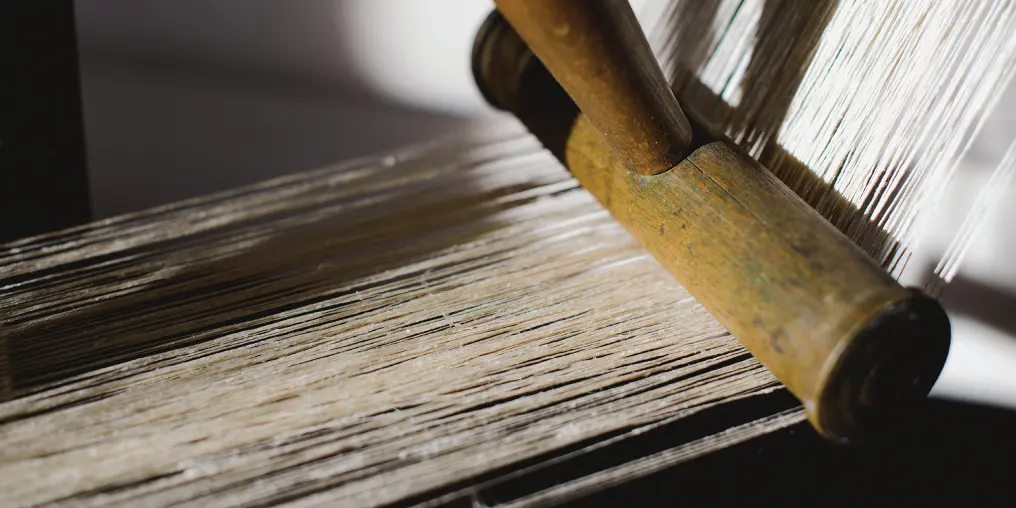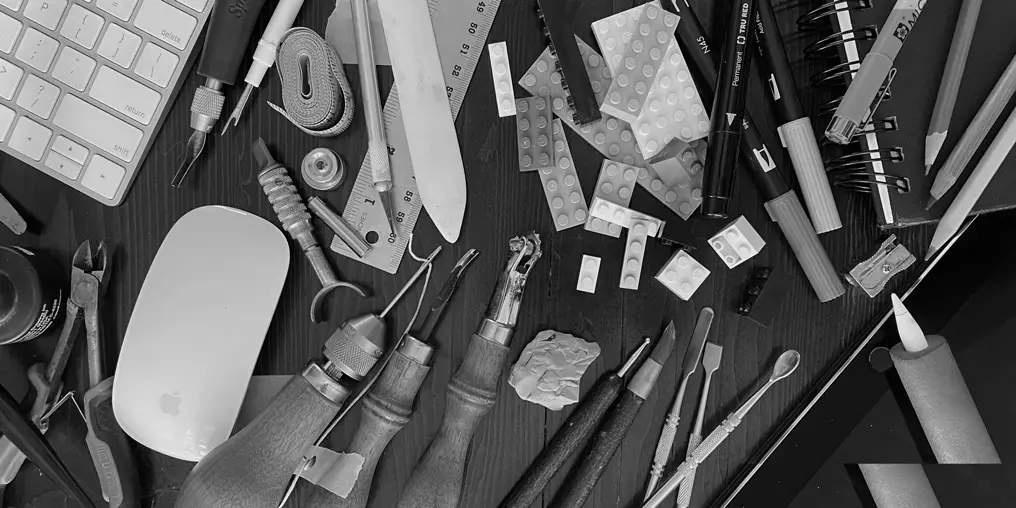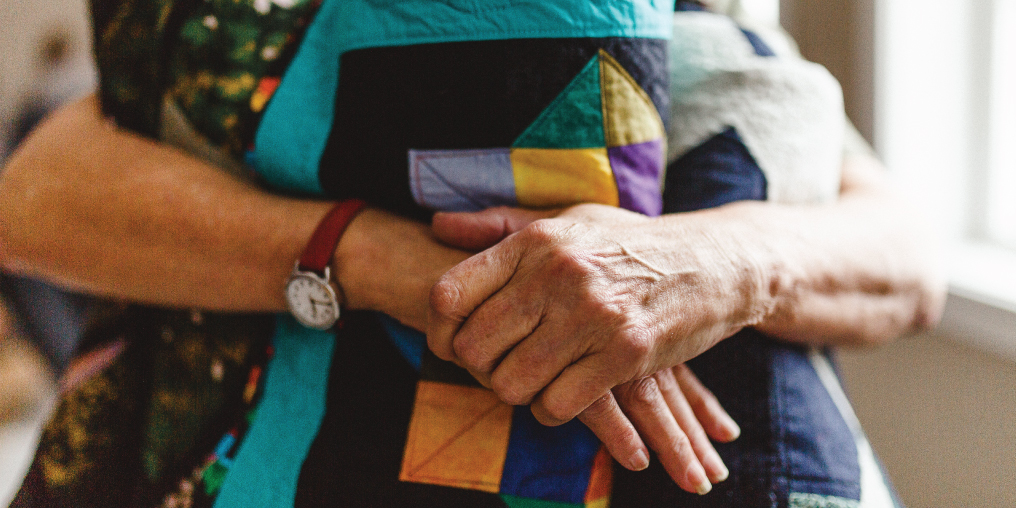LIVING FROM LINEN
I’m Karla, and I create linen. That’s right, I start with a handful of unassuming flax seeds and end up with a stash of linen cloth. It’s as simple as that—sort of.
My fascination with linen feels quite natural to me. That’s because, in addition to being descended from Scandinavian and Slavic ancestors who would have toiled over linen production, I grew up in a home where linen cloth had a regular presence. In fact, my mom was so meticulous in the laundering and ironing of her “linens” that I acquired a rather odd reverence for the fabric (even as we spilled gravy and wiped our fingers on it).
What is linen, actually?
Linen comes from the flax plant’s vascular tissues, which can be spun and then woven into a most luxurious fabric. Like cotton (and wood!), flax is mostly cellulose, but its long, lustrous fibres make a textile that’s exceptionally lightweight, breathable, and comfortable against the skin.
Some might note (accurately) that linen is inelastic and prone to wrinkling, resists dyes, and is expensive to produce and to buy. But it also resists stains, dries quickly, and has anti-bacterial properties that make it a desirable textile in hot temperatures. It launders well, it’s stronger when wet than when dry, and it’s durable.
It is also beautiful.
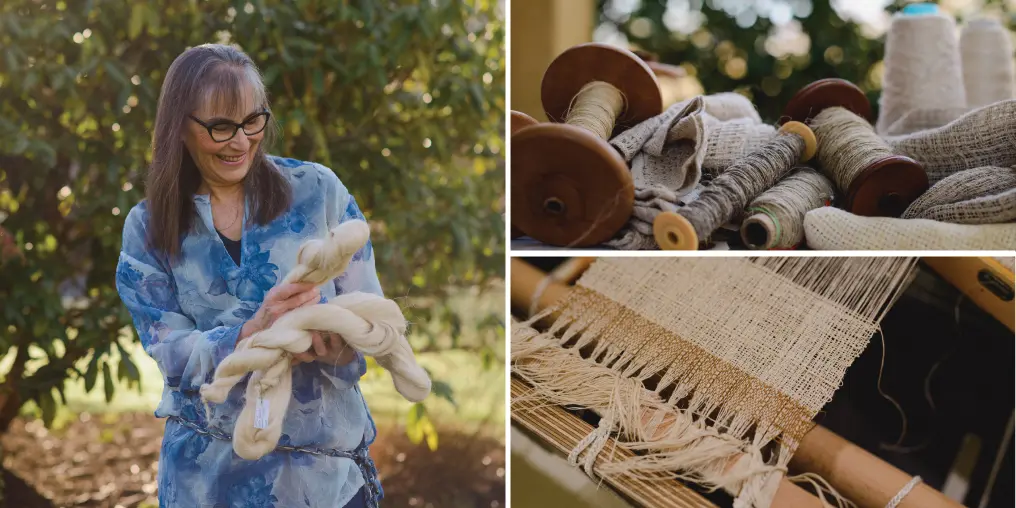
The allure of the process
For me, working with flax and creating linen is as much about the process as it is the product. As a horticulturist, I’m fascinated by flax cultivation, physiology, and biochemistry. Transforming the rigid flax straw into a pliable fibre requires a rhythmic, vigorous physicality. Spinning the lustrous fibres into yarn takes a concentration that is soothing and meditative. And finally, weaving the yarn into fabric appeals to my love of structure and function, and provides a tremendous sense of accomplishment.
When I learned that flax grows well right here in Comox, I was compelled to give it a try. I was unfazed by the fact that I knew nothing! Luckily for me, my husband Jim was equally interested, because the learning curve was pretty steep.
Linen-making … the abridged version
STAGE 1: SOWING, GROWING, AND HARVESTING
Although flax will grow in meagre soil with minimal inputs of nutrients and irrigation, it will thrive when grown with a bit more TLC. And wondrously, a small plot (say, 50 square metres) can supply more than enough fibre to keep a spinner spinning for a year—along with enough seed for next year’s crop and extra left over to bake with.
Flax is a fast-growing early spring crop with timing that matches that of garden peas. This means we sow the seed in March and harvest about 90 days later, in early July. The best quality linen fabric comes from flax plants grown crammed together; this makes them grow tall, with fine fibres. Jim and I use a precision seed drill to achieve a uniform seed distribution and planting depth. Seedlings emerge just eight days after sowing, and we hand pull weeds until the plants are tall enough to shade out any undergrowth. In just two months the first flowers appear atop the slender stalks. The ephemeral blossoms follow a daily ritual, opening at dawn and dropping petals by early afternoon. Each flower yields a bright round seed pod (called a boll) that contains ten seeds.
We harvest our plants by hand-pulling them in bundles. This method is traditional, but it’s also practical: flax fibres are strong and resist cutting. But pulling is easy, especially in our small, sandy-soiled plot where the shallow roots offer little resistance. To remove the seed bolls, we pass the tops of the stalks through a row of spikes called a rippler, tie the stalks into loose bundles, and load them on the trailer for moving to the next stage.
STAGE 2: FREEING THE FIBRE FROM THE STALKS
This stage is the most intense part of the flax cycle. It involves bacterial action to rot away supporting plant structures (this is called retting), physical crushing of the central core of the flax plants (breaking), and combing the fibres with long, sharp spikes (hackling).
Retting takes place in our retting tank—a re-purposed hot tub. Here the bundles of flax languish in 32o C water for three days while microbes digest away the non-fibrous tissues. The process is pretty stinky, but it’s a fleeting reality of farming.
After retting we lay out the flax in the field to dry, and within a couple of days it is ready to gather up and store. Flax straw can store indefinitely, but we prefer to process it all in late August, when the weather is hot and dry. First we crush the stalks with a cleaver-like tool (a break). If the retting was good, most of the non-fibre tissues drop away to reveal the fibres. Then I pass handfuls of the fibres through a progression of three torturous-looking combs called hackles, and tie them in braids called stricks. The fibre is now stable and ready for spinning.
Breaking and hackling takes about five days. We go at it pretty hard, but when we are done, we can put everything away and direct our attention to the September garden harvest.
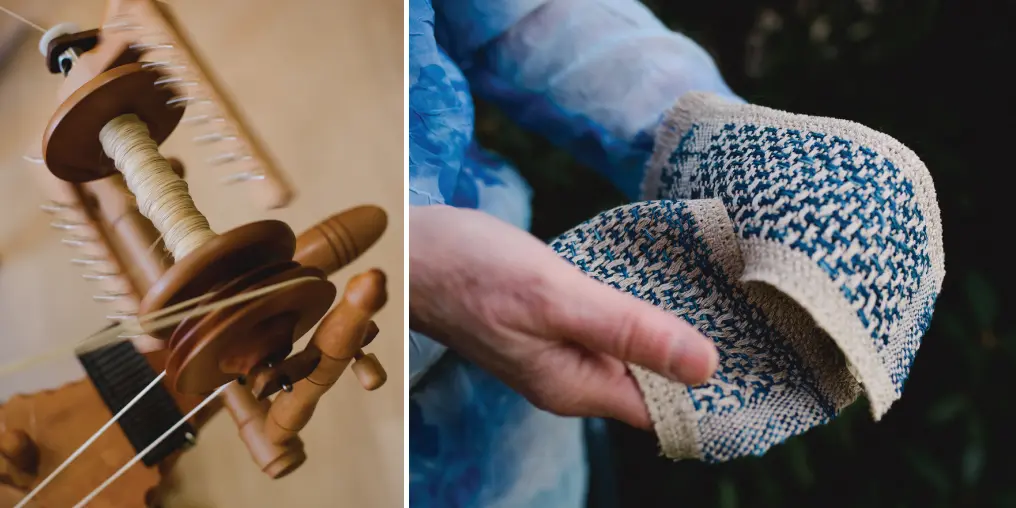
STAGE 3: SPINNING AND WEAVING
Spinning linen is, essentially, pretty simple. The challenge is managing the tangle-prone fibres which, in my case, can be over two feet long. (For comparison, cotton fibres are about an inch long, and wool can range from two to six inches.) The tool to hold long linen fibres (called line) is a distaff. Distaff styles run the gamut from hand-carved vintage models to an upended broom thrust into a pail of sand. Fibres are loaded onto the distaff, leaving the hands free to spin at a wheel, or with a spindle. Line flax spins into the lustrous and exceptionally strong yarn desired for quality fabric.
Short fibres that remain after hackling and prepping the distaff are called tow. Tow spins into a rougher yarn that has textural interest, but it isn’t as strong, and weaves a rougher cloth.
Weaving is the ultimate reward for growing good flax. After six years of practice, I’m ready to tackle more intricate textiles with my hand-spun yarn. Although my looms are currently in storage while Jim and I renovate my workshop, I have a small loom for sampling and designing my next projects. I plan to weave yardage and sew a cargo vest for Jim. I also hope to weave more sophisticated towels and textiles. With many miles of yarn wound onto cones, I expect to keep busy for some time.
I’m quite happy to be on this path of discovery. Working to grow and weave linen challenges my curious mind, integrates well with my family life, and is really, really satisfying. When I started out I felt a little alone, but I’ve discovered a thriving worldwide community of flax enthusiasts who inspire my hope that, rather than being a quaint lost art, hand-crafted linen has a legitimate place in a contemporary world.

